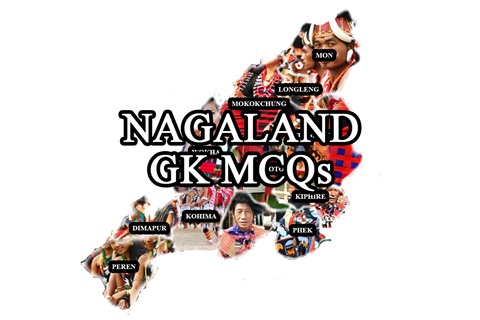‘Naga‘ is a generic name for several groups of tribes, each having distinct identity. There are various sub-tribes under the ‘Naga‘ tribe spread across various states in India and in Burma. In this post we shall see the list of recognized tribes in Nagaland State.
List of recognized Scheduled Tribes in Nagaland
Nagaland has five communities notified as Scheduled Tribes. These are the recognized Scheduled Tribes in Nagaland.
- Nagas (Indigenous of Nagaland)
- Kachari (Indigenous of Nagaland)
- Kuki (Indigenous of Nagaland)
- Garo (Indigenous of Nagaland)
- Mikhir (Indigenous of Nagaland)
List of recognized tribes in Nagaland:
As per the Department of Personnel and Administrative Reforms post on its website in 2016 citing Home Department notification of 2009 , there were 14 officially recognized Naga Tribes in Nagaland, which includes:
(1) Angami,(2) Ao, (3) Chakhesang, (4) Chang, (5) Khiamniungan , (6) Konyak , (7) Lotha , (8)Phom, (9) Pochury, (10) Rengma, (11) Sangtam , (12) Sumi , (13) Yimchunger) , (14) Zeliang
Now, after the recognition of Tikhir as a separate Naga tribe in Jan. 2022, this should now be 15 recognized Naga tribes in Nagaland, which includes:
(1) Angami,(2) Ao, (3) Chakhesang, (4) Chang, (5) Khiamniungan , (6) Konyak , (7) Lotha , (8)Phom, (9) Pochury, (10) Rengma, (11) Sangtam , (12) Sumi , (13)Tikhir, (14) Yimkhiung (earlier name: Yimchunger) , (15) Zeliang
Tikhir Naga Tribe was a sub-tribe under Yimchunger (now Yimkhiung) tribe before the recognition of Tikhir as a Naga Tribe by Govt. of Nagaland in 2022.
The general reference “16 Tribes of Nagaland” includes:
(1) Angami,(2) Ao, (3) Chakhesang, (4) Chang, (5) Khiamniungan , (6) Konyak , (7) Lotha , (8)Phom, (9) Pochury, (10) Rengma, (11) Sangtam , (12) Sumi , (13) Yimkhiung (earlier name: Yimchunger) , (14) Zeliang , +(15)Kuki, +(16)Kachari
+Tikhir, would make “17 tribes of Nagaland”.
Backward Naga Tribes of Nagaland:
The following nine (9) Naga Tribes are considered ‘backward tribes’ for the purpose of reservation namely –
Chakhesang, Chang, Khiamniungan, Konyak, Phom, Pochury, Sangtam, Yimchunger and Zeliang.
Besides the above, ‘Sumis from Kiphire District’ are also entitled reservations under backward category.
Now that, Tikhir is also a separate tribe, it is among the backward tribes list.
Therefore, in total 10 backward tribes + ‘Sumis from Kiphire District’ .
Names of Composite Naga tribes or communities
- Chakhesang:
- The term Chakhesang is formed from the names of three ethnic groups namely: Chokri, Khezha and Sangtam
- Zeliang:
- The term Zeliang is formed from the names of two ethnic groups namely: Zeme and Liangmei
- Zeliangrong:
- The term Zeliangrong is formed from the names of three ethnic groups namely: Zeme, Liangmai and Rongmei tribes together.
- Tenyimi:
- Tenyimi consists of the following tribes: Angami, Chakhesang, Inpui, Mao, Maram, Pochury, Poumai, Rengma, Thangal, Zeliangrong [10 tribes]
What is a tribe?
A tribe is a social group that shares common ancestors, beliefs, culture, customs, and traditions. The term tribe is used in many different contexts to refer to a category of human social group.
In the context of India, the tribes are the autonomous or native people of the land who are believed to be the earliest settlers in the Indian Peninsula. They are generally called Adivasis, implying original inhabitants.
Definition of Scheduled Tribe
- The term ‘Scheduled Tribes’ appears in the Constitution of India.
- Article 366 (25) of the Constitution of India defined scheduled tribes as “such tribes or tribal communities or parts of or groups within such tribes or tribal communities as are deemed under Article 342 to be Scheduled Tribes for the purposes of this constitution”.
- Article 342 prescribes the procedure to be followed in the matter of specification of scheduled tribes.
Why the name “Scheduled Tribes”?
The tribal communities in India have been recognized by the Indian Constitution under ‘Schedule 5’ of the constitution. Hence the tribes recognized by the Constitution are known as ‘Scheduled Tribes’.
Reference:
- nagaland.gov.in
- Nagaland Tribes (MorungExpress)
- List of recognized Naga Tribes and Scheduled Tribes – DPAR-Nagaland


